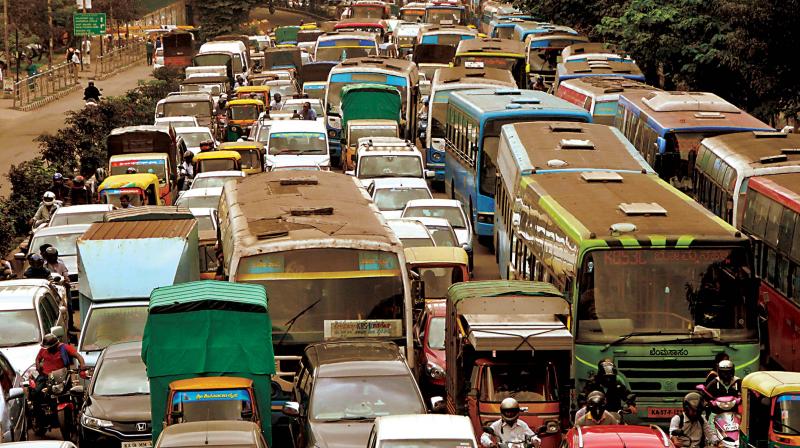Bengaluru's air thick with pollutants: Study

BENGALURU: In an independent study of pollution levels done along seven routes in the city, it was found that peak hours showed poor air quality.
The comprehensive report titled, ‘Bengaluru’s Rising Air Quality Crisis’ prepared by Co Media Lab and Climate Trends was released on Wednesday by the chief scientific officer, KSPCB, Nagappa, and Regional Director, C40 cities, Sanjay Sridhar, at a media workshop on air pollution.
Questioning the veracity of the online monitoring in the city, the report found that vehicular emissions, waste burning and dust were the major contributors (65%) to the problem.
Already known as ‘asthma capital’, a lung test on 503 city school children in 2015 found that only 11 per cent had lungs in excellent condition, while 36 per cent failed the test.
“Diabetes, autism, behavioural changes are also the ramifications of air pollution. Metabolic diseases like endocrine disorders and diabetes too are a result of PM 2.5 pollution,” said Dr Paramesh H., a pediatric pulmonologist at a workshop on Bengaluru Air Quality conducted by Co Media labs in partnership with Climate Trends. It was highlighted that the poor quality incinerator to discard sanitary waste results in the emission of carbon monoxide and has a direct ramification on the health.
In an air quality monitoring exercise conducted for seven days on select routes, the author of the report, Ms Aishwarya Sudhir concluded that breathable pollution levels are much higher than that of the ambient levels monitored by the KSPCB.
Revealing the details of a sharp increase in the number of heart attack patients below the age of 40, Dr Rahul Patil, cardiologist with Jayadeva Institute of Cardiovascular Sciences and Research said, “In the past eight months, the hospital has registered over 1,050 cases of heart attacks under the age-group of 40. After excluding all the risk factors like smoking and diabetes, we found that cab and auto drivers were the worst hit as they remain stuck for long hours at traffic junctions.”

